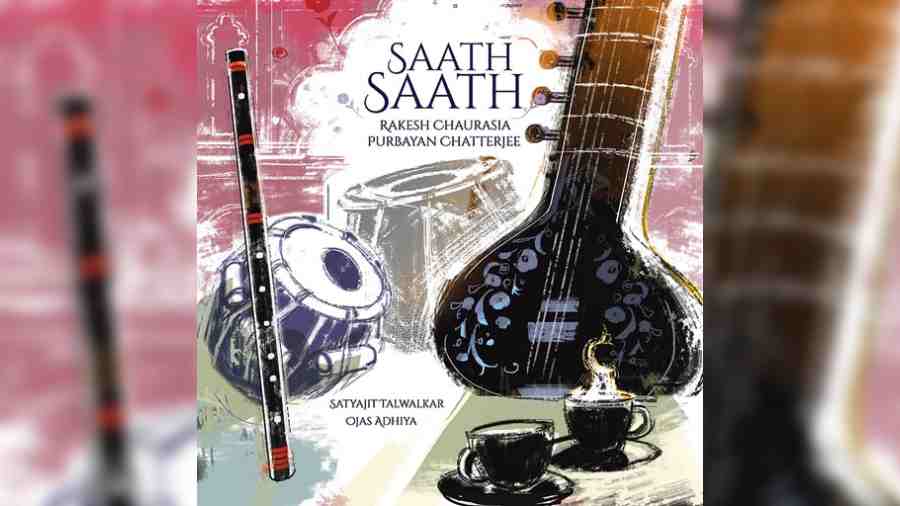After a very successful album titled Unbounded (Abaad), Sitar maestro Purbayan Chatterjee has a new release, this time with flautist Rakesh Chaurasia. Titled Saath Saath, the album was recorded in Mumbai earlier this year and features seven ragas for morning and night. Co-written with the nephew of the legendary flautist Hariprasad Chaurasia, the record draws inspiration from the original spirit of the raga tradition and presents a beautiful aural experience. Here’s what the sitar genius told us.
Every album begins with a larger vision. What was that vision for Saath Saath?
My last album Unbounded was an exploration. I had a free rein to venture into uncharted territory and add many different elements to each song. I wanted to see what I could do with that freedom in my own mind if I got back to the exploration of ragas. All my fellow artistes on this record and contemporary masters and are very modern in their approach. So Saath Saath is a homecoming album, a home with a view of the world
There are seven ragas on the album, which also means the album needs to be heard in a certain sequence. Do you remain a believer in the album format?
The album progresses from the morning divinity of Lalit to the mid-day Shuddh Sarang and Madhuvanti — Yaman unleashes the romance of the evening while Pahadi and Bhairavi explore a more free flowing transition into folk and thumri…. The record and the sequence of ragas thereof is, itself a progression of sorts, from morning to evening — from the structured to the free-flowing.
What made you realise that Rakesh Chaurasia will be integral to the album.
Rakesh bhai and myself have been friends and colleagues for well over two decades. I hope the audience will see and feel the camaraderie and bonhomie we share on these performances. Indian classical music is an improvisational form of music so it has to be recorded and shot on the fly. We have tried to keep this as organic as possible and this is evident in the little bit of talking that we have retained in our audio as well as our videos of these ragas.
At the end of the day, people look to music for hope and a reason to carry on. Does Saath Saath envision that idea?
Saath Saath is a metaphor for how we should exist in this world. The progress of humankind is based on the principles of working together for a better tomorrow. Nations and organisations should work together to combat threats like global warming. Music is a very potent binding agent which brings people together. The music of Saath Saath is a hope for a more harmonious future.

The album sleeve of Saath Saath
The album comes on the back of Unbounded (Abaad). What made you decide on having back-to-back releases?
Unbounded came at a time when the pandemic was at its peak. I wanted to release an album that could be promoted with a tour. Saath Saath provided me with an opportunity to take the music live to audiences across the world.
Are you currently working on any other projects?
I am working on a project the working title of which is “Trans Sitar” — this explores ragas in a “trance” soundscape.
